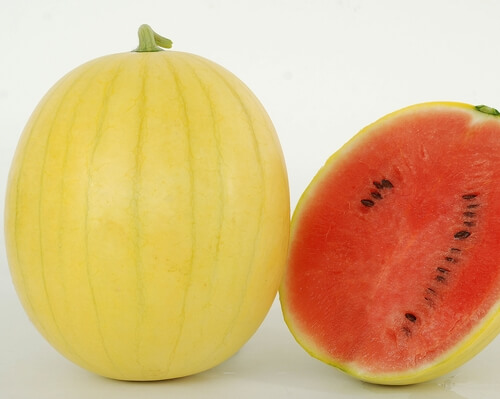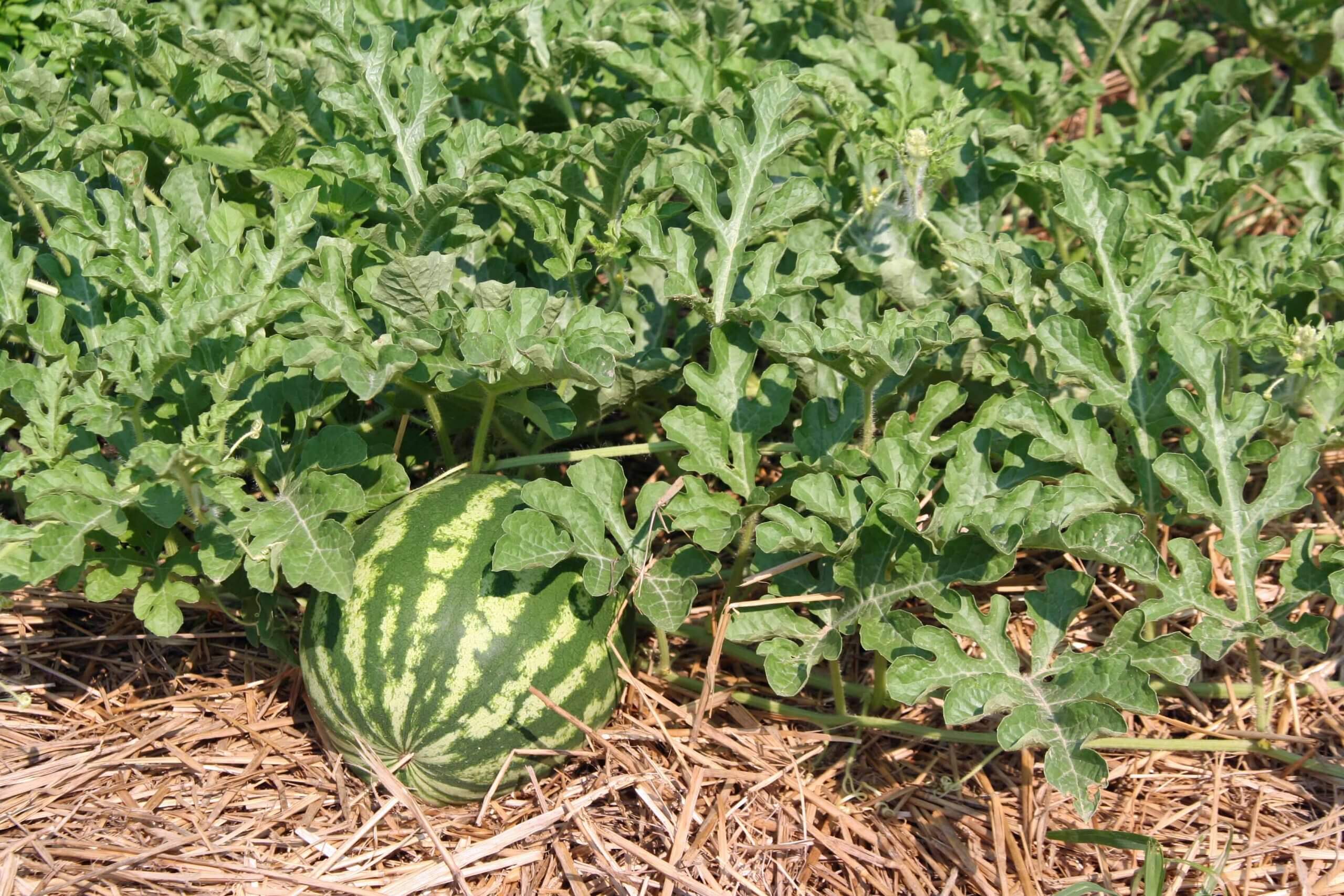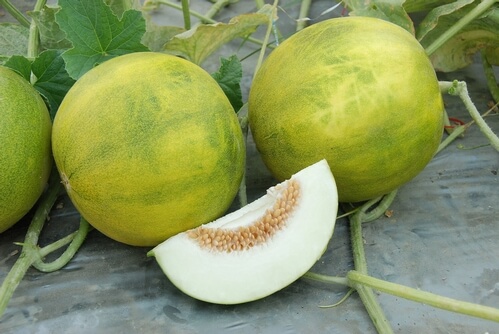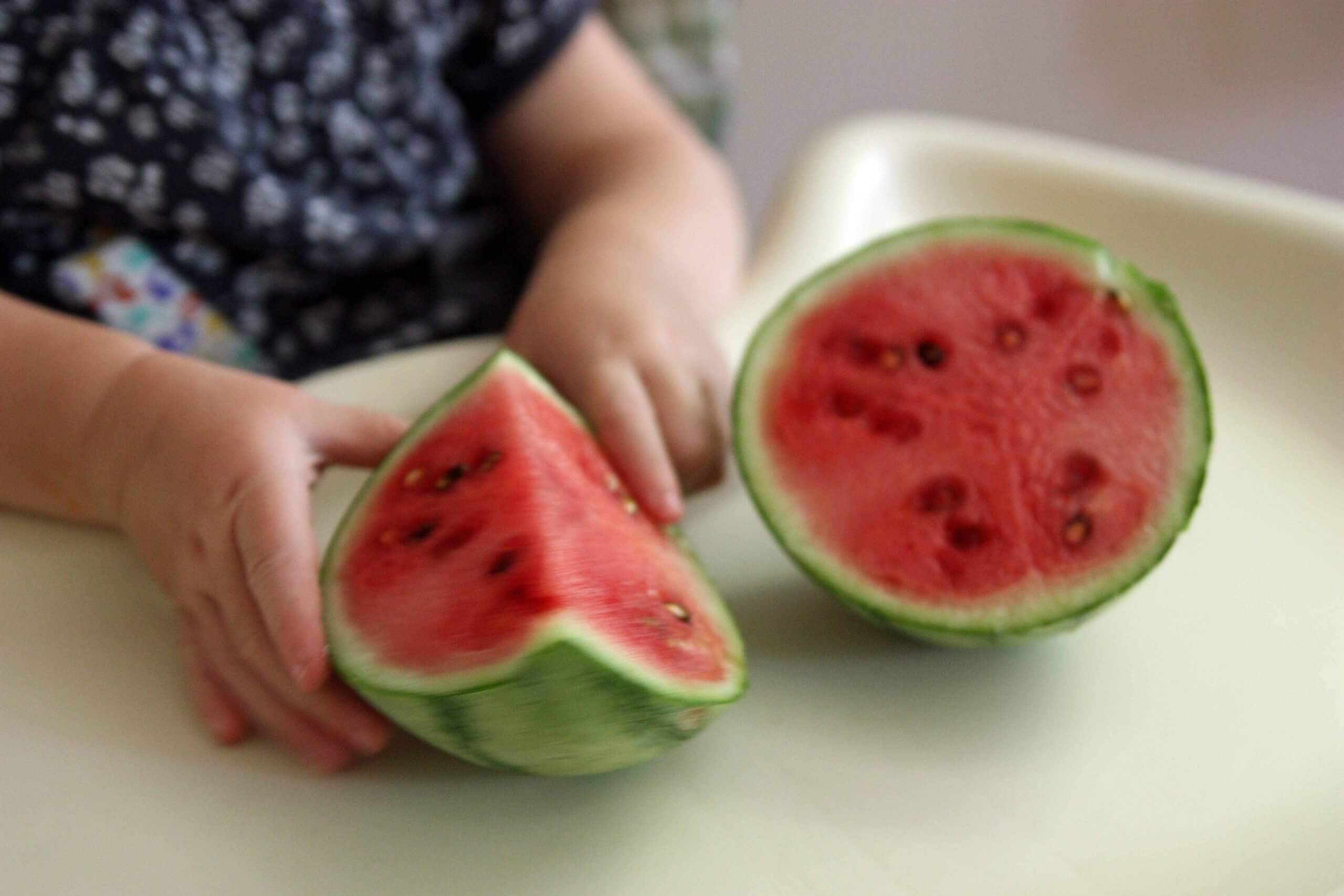
Melons are a summer favorite that always have a home in my garden. Truly, the large, sweet, globose fruits are one of the most satisfying garden edibles to grow. As long as one has a sunny, spacious spot with good soil on high ground, growing watermelon, cantaloupe, honeydew, and other melons is a snap. And for those with smaller gardens, there are always space-saving bush varieties.
One especially welcome melon characteristic is the ability for the vines to thrive in the heat. Watermelons originate from Africa, and many other popular melons have origins in the Mediterranean, Middle East, and Southeast Asia, so you know a little heat and even some drought won’t bother them a bit. In fact, slight drought can be beneficial to melons as it tends to concentrate their sugars making them taste richer and sweeter.
When choosing a melon for the garden, there are several factors to consider. Aside from plant size, one must think about fruit size and output as well as other factors, like color, flavor, and seedlessness. The best way to get a sense of melon options is to get to know each type as well as their varieties and attributes.
Watermelon (Citrullus lanatus)
Truly the king of melons, watermelons are highly variable. Vines can extend to 25 feet or only 4 feet. The fruits may be tiny and round or huge and oblong—ranging from 2 to 60 or more pounds—and have red, pink orange or yellow fleshed fruit. Some of the best hybrid varieties are seedless.

When trying watermelons out for the first time, it’s best to stick with tried-and-true classics, like the reliable ‘Crimson Sweet’ with its large fruits with red, sweet flesh, or the old Southern favorite ‘Charleston Gray’, which has large, oblong fruits with netted gray-green skin and bright red, crisp flesh. The popular ‘Sugar Baby’ bears sugary icebox-sized melons on compact vines reaching only 5 to 6 feet.
More daring gardeners can delve into more unusual watermelon varietals. The candy orange fruits of ‘Orange Krush’ are borne on high-yielding vines and look great in a fruit salad. Even better is the seedless, small, yellow-fleshed Amarillo’ and orange-fleshed ‘Orange Crisp’ watermelons. And those seeking mini watermelons should look no further than the personal-sized ‘Little Baby Flower’ with vines that can produce up to five fruits.

Cantaloupe or Muskmelons (Cucumis melo)
Sweet cantaloupe straight from the garden is a delight. No store-bought melon can compare. The rambling vines produced orange-fleshed fruits of various sizes with varying flavors and levels of sweetness. Some are ribbed and netted on the outside and others are not.
Most gardeners are surprised by the number of cantaloupe varieties available when they first start growing them. It’s hard to know where to start, but as with watermelon, classic old-school varieties yield consistently good results. One of the best is the old-timey ‘Hales Best Jumbo’, which is early, high-yielding and super sweet. For gardeners with less space, the small vined and fruited ‘Minnesota Midget’ is a good choice. And when it comes to great flavor, nothing beats the super sweet, deep orange flesh of the Tuscan heirloom, ‘Melone Retato Degli Ortolano’ or the ugly but good ‘Zatta’ melon.

Honeydew (Cucumis melo, Inodorus Group)
Crisp green flesh is the mark of a good honeydew melon. Of these, the variegated ‘Snow Leopard’, with its green splashed white fruits and super sweet greenish-white flesh, is one of the most interesting for home gardeners. The super sweet ‘Super Dew’ is another that will always yield good fruit.
Other Melons
This year’s AAS winning plants included a hybrid Christmas or piel de sapo melon called ‘Melemon’, which produces many small fruits with outstandingly crisp, sweet-and-tart pale green flesh, that’s worth trying. And beautiful little French Charentais-type melons, like the sumptuous new ‘Savor’, often pay for themselves as these sweet specialty melons are very expensive.
Planting and Harvest
Growing melons if fairly easy. Plant melons during the warm season in full, bright sun and well-drained planting mounds fortified with OMRI Listed Black Gold Garden Compost Blend. Plant 2 to 3 vines per mound and feed plants with a quality tomato and vegetable fertilizer for good production. Vines grow best when soil pH is between 6.0 and 7. On average, vines take between 75 and 95 days to produce fruit, depending on the variety. It often pays to surround melons with a bed of straw to protect the fruits from rot.
Knowing when to harvest melons takes some experience. When harvesting watermelons, the rind should be glossy and the

(image care of All-America Selections)
closest tendril to the stem should have begun to turn brown. One can also try the ‘thump test.’ When lightly thumped, the fruit should have a taught ring (too high means it’s immature and too low means it’s overmature). Finally, the spot where the melon lies on the ground should be very light yellow rather than white. When severing a watermelon from the vine, always cut it rather than pulling or twisting it.
Harvest indications for other melons include a yellowing ground spot and lightening skin color (usually from deep green to tan) as well as a loosening of the stem from the vine. Melons that are ready to pick also emanate a sweet melon smell from the skin, so don’t be afraid to smell your melons before picking them.
It’s not too late to take advantage of the Year of the Watermelon, or ‘Melon’ as the case may be. There are sure to be lots of melon starts just waiting to be purchased from your favorite garden center. And once you harvest that first fruit, you will be glad you planted!

